Talk with our local travel specialist who can help organize your trip.
Top 10 facts about Swayambhunath Stupa
Do you know the reason behind its name, "The Monkey Temple? "Do you know the meaning of "Swayambhunath?"
Swayambhunath Stupa, a UNESCO world heritage site in Kathmandu, is the glory of Kathmandu since the 5th century and a sacred Buddhist pilgrimage.
Overlooking Kathmandu valley and offering splendid panoramic views of Kathmandu valley, this site is an ideal place to escape the hustle and bustle of Kathmandu. Nestled on top of the hill, Swayambhunath is truly a must-visit place in Kathmandu, as suggested by thousands of travelers.
A few miles away from Tribhuvan International Airport (approximately 7 miles), Swayambhunath can be reached within 30 minutes by bus.
And to the point of no surprise, you can spend all day long here allured by its otherworldly beauty. This could be a reason why travelers who once visited Swayambhunath want to visit again or at least write wonderful reviews on websites and TripAdvisor. (Google alone has more than 7400 reviews.)
The enormous whitewashed dome with all-seeing eyes of Buddha and gilded spire is visible from miles away. But you know that sensational feeling when you stand right next to the lofty stupa.
Stand in awe! While Swayambhunath is a box full of surprises for a new visitor, it is still a box full of wonder to a regular visitor.
There are few things or say facts about Swayambhunath you might not know. Take a minute to read out the top 10 interesting facts about Swayambhunath stupa.
Table of Content
Top 10 Interesting Facts About Swayambhunath Stupa
- #1 Meaning of Swayambhu and the name " The Monkey Temple"
- #2 Self-Evolved
- #3 Symbolism
- #4 Home to abound monkeys
- #5 365 steps
- #6 Swayambhunath Buddhist Museum
- #7 Five Dhyani Buddhas
- #8 Blend of Buddhism and Hinduism
- #9 The Vajra (Lightning Bolt)
- #10 World Peace Pond
5 Major Tourist Attractions in Swayambhunath Temple
How To Reach Swayambhunath Temple
Festivals and Events Celebrated At Sayambhunath Temple
Top 10 Interesting Facts About Swayambhunath Stupa
#1. Meaning of Swayambhu and the name " The Monkey Temple"
Swayambhu (sometimes Swayambhu or Swoyambhu) means self-sprung, self-existent, or self-risen. The word Swayambhu is derived from two words- 'Swayam,' which means 'self' and 'bhu,' which means 'to take birth.'There's a history behind it - the legend has it that Swayambhunath Stupa self-existed.
And the reason behind its name, The Monkey Temple, is the abundant monkeys living in its vicinity. (know more about it in number 4)
#2. Self-Evolved
According to the myth, Swayambhunath was light before it turned into a stupa.
As per Swayambhu Puran (Buddhist Scripture), Kathmandu valley was once an enormous primordial lake with a miraculous lotus radiating light.
The Bodhisattva Manjushri was allured to the brilliant shine of the lotus and cut a gorge in the mountain with his sword, transforming the lake into Kathmandu valley, lotus into a hill, and the light into the present Swayambhunath.
#3. Symbolism
You might not know, but the entire stupa from its massive white dome to the gilded spire is symbolic.
The white dome represents the earth, the pair of eyes in all four sides are actually Buddha's eyes signifying all-seeing perspective. The Buddha's eye on each side of the stupa gazes Kathmandu valley in all directions.
The nose-like structure in between the pair of eyes is the Nepali number Ek (one), and the gilded spire above represents the 13 stages to nirvana. The spire was painted with 20kg of golds during its renovation in 2010.
#4. Home to abound monkeys
Swayambhunath stupa is home to abound monkeys. There are more than 200 monkeys around Swayambhunath residing in the lush forest to the northwest of the stupa.
It is believed that the monkeys reincarnated from the head lice of Manjushri, one of the Bodhisattvas of Chinese Buddhism. You will see those monkeys almost everywhere around the stupa.
Beware as they might attack you if they see you carrying a bag or plastic bag.
#5. 365 Steps
While there are two entrances, the main entrance will lead you to the stupa through 365 stone steps. You will have to climb 365 stone steps with few buddha statues, stone chaitya, and souvenir stalls along the way. And most of the time, you have to walk past the troop of monkeys along the stairway.
The steep ascent, in a way, is a pilgrimage to pay homage to the stupa. Some people may find it challenging to climb 365 steps. As an alternative to the Eastern stairway (just to skip the 365 steps), there is another way to the stupa on the western side of the stupa.
Featured Trips
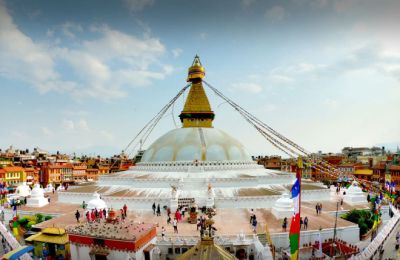
Kathmandu Heritage Tour - 1 day
Kathmandu Heritage Tour lets you explore the city’s iconic UNESCO World Heritage Sites. Walk through the medieval city and discover Kathmandu’s cultural gems.
Inquire Now
Kathmandu UNESCO World Heritage Sites Tour - 1 day
Kathmandu UNESCO World Heritage Sites Tour takes you to 4 major tourist attractions and UNESCO World Heritage Sites in Kathmandu city: Pashupatinath , Kathmandu Durbar Square, Boudhanath and Swayambhunath.
Inquire Now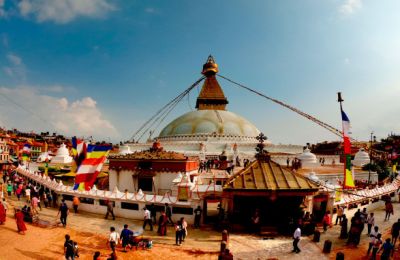
Explore Six UNESCO heritage sites and Nagarkot Sunrise - 3 days
Explore 6 of the UNESCO world heritage sites in Kathmandu Valley and embrace the sunrise over mountains, including the mighty Everest, from the Nagarkot viewpoint.
Inquire NowWhere to travel next?
Get help from our travel specialists for holiday ideas that matches your interests.
#6. Swayambhunath Buddhist Museum
Swayambhunath Buddist Museum is an archaeological museum that depicts the life of Buddha through collections of Buddhist statues. To accurately locate this museum, look for a small red brick building with an ornate wooden door.
Note: You don't have to pay to visit this museum. It might take you a few minutes to roundabout the museum, and you will enjoy it.
#7. Five Dhyani Buddhas
The Five Dhyani Buddhas (statue) can be seen in the gilded pentagonal toran above the eyes of Buddha.
Five Dhyani Buddhas are icons of Mahayana Buddhism, found in Buddhist iconography. Vairochana, Akshobhya, Ratnasambhava, Amitabha, and Amoghasiddhi are the five Dhyani Buddhas believed to be transcendent beings and visualized during meditation.
The picture here shows the five Dhyani Buddhas. They are associated with a distinct color, gesture, and symbolic animal. They represent a different aspect of enlightened consciousness and are considered guides to spiritual transformation.
If you want to know more about the five Dhyani Buddhas, click the link here: The Five Dhyani Buddhas
#8. Blend of Buddhism and Hinduism
Don't get surprised if you come across a Hindu devotee around the stupa. Swayambhunath is one of the oldest (2000 years old) religious architecture, and one of its kind.
The complex of stupa houses several shrines and temples. The few significant temples are Hariti Temple, Shakyamuni Temple, and Pratappur Temple. Swayambhunath stupa boasts both Buddhism and Hinduism.
The stupa is believed to be a symbol of harmony since it showcases the blend of Buddhism and Hinduism in Nepal.
#9. The Vajra (Lightning Bolt)
On ascending the 365 stairway to the stupa, you will find an enormous brass-plated Vajra (Lightning Bolt) embellished with animals of the Tibetan calendar. This huge and impressive lightning bolt garner the stupa and is a symbol of the power of enlightenment.
Note here: circumnavigate the stupa in a clockwise direction from the Vajra.
Featured Trips

Kathmandu Heritage Tour - 1 day
Kathmandu Heritage Tour lets you explore the city’s iconic UNESCO World Heritage Sites. Walk through the medieval city and discover Kathmandu’s cultural gems.
Inquire Now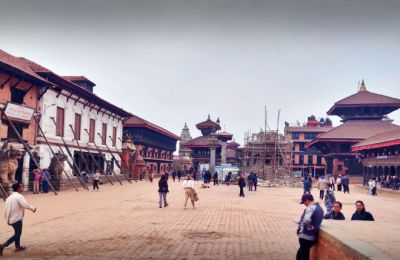
Kathmandu, Pokhara and Chitwan Tour - 9 days
Kathmandu, Pokhara and Chitwan Tour lets you experience the best of Nepalese culture, adventure, snow-capped mountain views and natural wonders of Pokhara and wildlife in chitwan national park
Inquire Now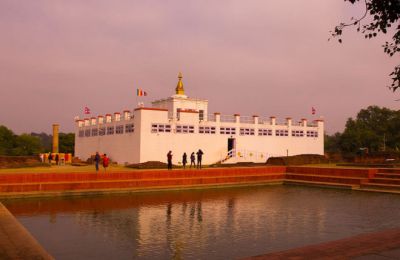
Kathmandu and Lumbini Sightseeing Tour - 6 days
In this Kathmandu and Lumbini sightseeing tour, you'll explore the cultural and religious highlights of the Kathmandu and Lumbini valleys within 6 days in Nepal
Inquire NowWhere to travel next?
Get help from our travel specialists for holiday ideas that matches your interests.
#10. World Peace Pond
On the western side of Swayambhunath stupa is a beautiful pond named World Peace Pond. There is a statue of Buddha in the middle of the pond and small cauldron at the base.
An exciting thing here is about the coin and cauldron. (The vendors around the pond sells coins.) Buy coins from them and try flipping the coin into the cauldron. And if you, fortunately, do it, you are the luckiest - wish for something, and it will come true! That's what people believe.
5 Major Tourist Attractions in Swayambhunath Temple
- Shantipur
- Harati Devi Temple
- Pratapur and Anantapur
- Shree Karma Raj Mahavihar
- Vajra
Opening Hours
- Dawn To Dusk, throughout the week
When to go
- To see dramatic morning view, make sure you reach swayambhunath before 9am.
- Catch the happenings in the stupa on saturday. Leisure day For Nepalese!
Entry Fee
- Entry fee for foreigner – NPR 200 per head
- Entry fee for SAARC citizens – NPR 50 per head
- Entry fee for locals – free to visit
- Children below the age of 10 are free to enter
How To Reach Swayambhunath Temple
Via taxi: You can hire taxi to reach swayambhunath, its 4km away from the city, Via Local Bus: local buses from sundhara,(ratnapark) leaves for swayambhunath frequently.
Festivals and Events Celebrated At Sayambhunath Temple
- Buddha Jayanti(in April or May)
- Losar (in February or March)
- Gunla celebration (August or September)
Map Of Swayambunath Stupa, Kathmandu
Photos Of Swayambhunath Stupa
- Written by: Puskar Rai
Updated: Nov, 29, 2019

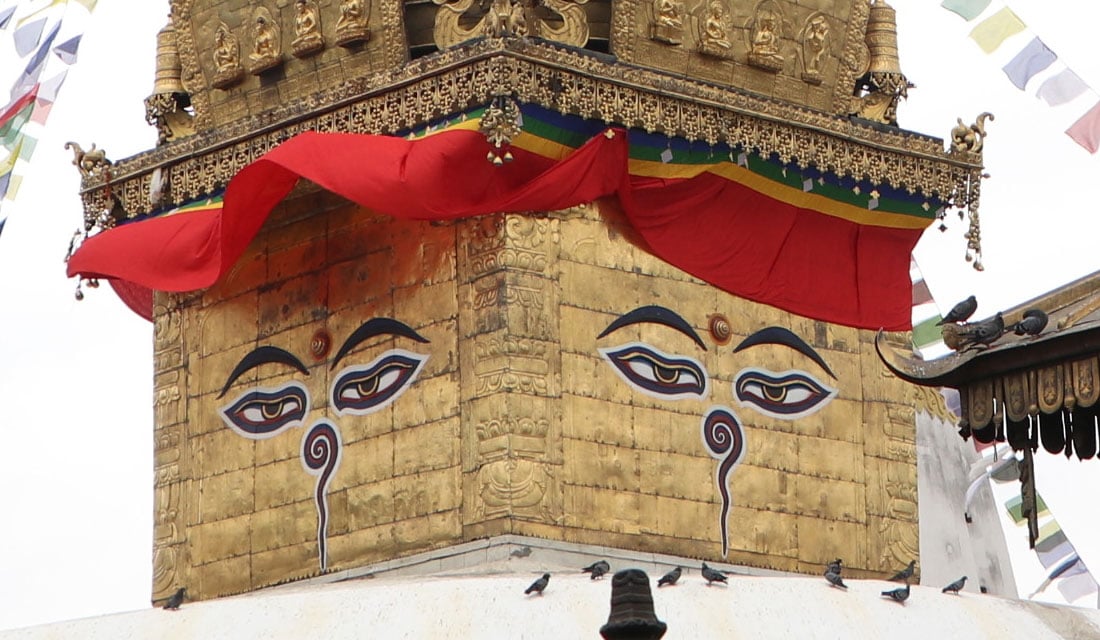













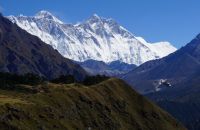
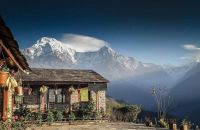
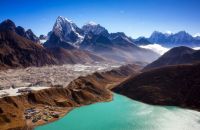
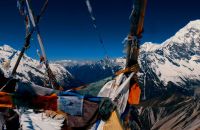
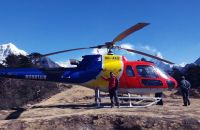
















Recent Comments